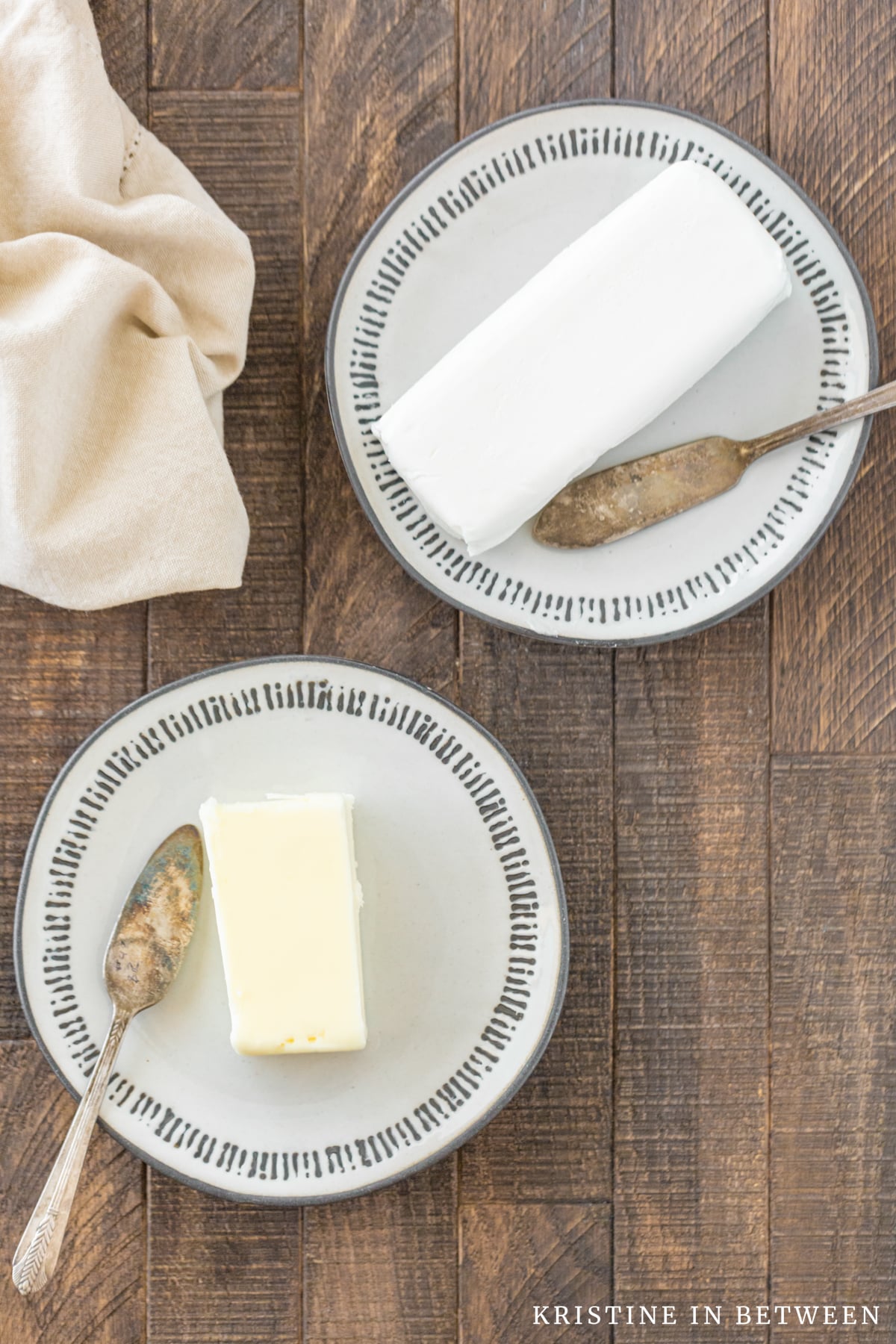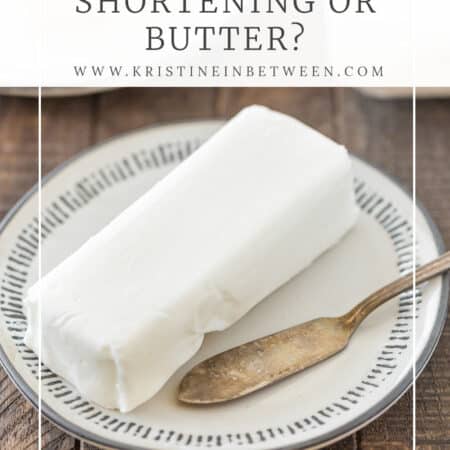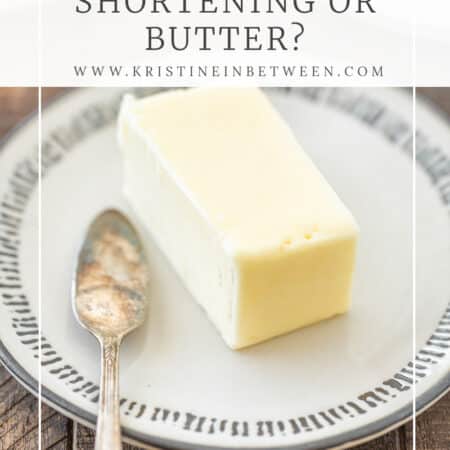The Difference Between Shortening and Butter
This post contains affiliate links and we make a small commission for purchases made using these links.
Do you know the difference between butter and shortening? Outside of the obvious, I mean. Do you know why one may be used in a recipe over another? Well, you’re not alone.
The choice between butter and shortening in baking can be a bit perplexing, but don’t worry. Today I’m going to break down fats. We’ll talk about when to use butter, when to opt for shortening, and when a combination of both might just be the secret to your baking success.
Let’s Start With the Difference Between Shortening and Butter
Butter and shortening are two fats often used in baking, and they have some key differences. Butter is made from milk and has a rich, creamy flavor that you might associate with cookies or pastries. It’s great for adding flavor and moisture to your baked goods.

Do you love this post?
Share it on Pinterest
Shortening, on the other hand, is a solid fat made from vegetable oils that has a neutral taste. It’s excellent when you want a specific texture, like in pie crusts or biscuits, where you aim for flakiness.
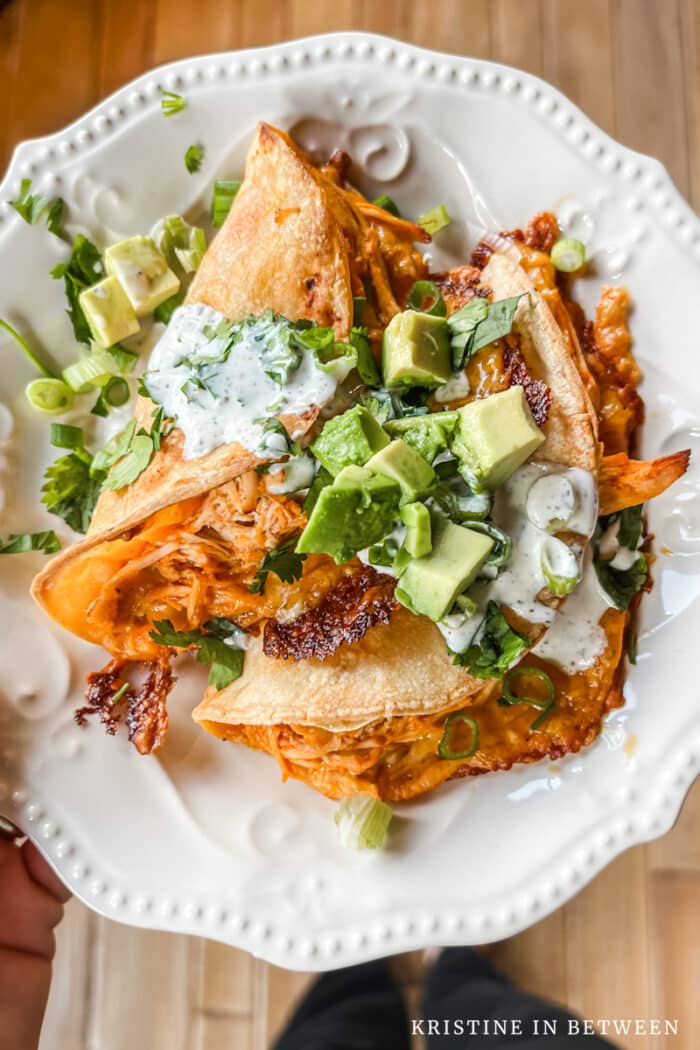
download our free
Meal Planner & Grocery List
dinner made easy
In terms of texture, butter melts at a lower temperature, which makes your baked treats tender and moist. Shortening, with its higher melting point, stays solid at room temperature and creates a crumbly, flaky texture.
If you’re worried about allergies or lactose intolerance, shortening is dairy-free and can be a suitable alternative.
Butter has a limited shelf life due to its dairy content, so it should be kept in the fridge and used relatively quickly. Shortening, on the other hand, lasts longer because it doesn’t contain dairy and can be stored at room temperature without spoiling.

The Buttery Goodness:
Let’s start with butter, the classic favorite. Butter is a kitchen staple that brings that unmistakable rich, creamy flavor to your baked goods. Here’s when you should consider using it:
- Flavor Enhancement: If your recipe depends on the luxurious taste of butter – think cookies, pastries, or a tender pie crust – then butter is your go-to fat. Its natural dairy flavor complements sweet and savory dishes alike.
- Texture Magic: Butter contributes to a tender and moist crumb, making it ideal for cakes, brownies, and cookies. The fat in butter coats flour proteins, inhibiting gluten development, resulting in a delicate texture.
- Browning Power: Butter helps your baked goods achieve that beautiful golden-brown hue. Its milk solids caramelize during baking, enhancing both appearance and flavor.
However, it’s essential to remember that butter has a lower melting point than shortening, which can lead to cookies spreading more during baking. If you want to maintain a specific shape, consider chilling your butter- based dough before baking.
Tip
Use unsalted butter for baking and salted butter for cooking. If you have to use salted butter for baking, reduce the salt in the recipe by 1/4 to 1/2 teaspoon.
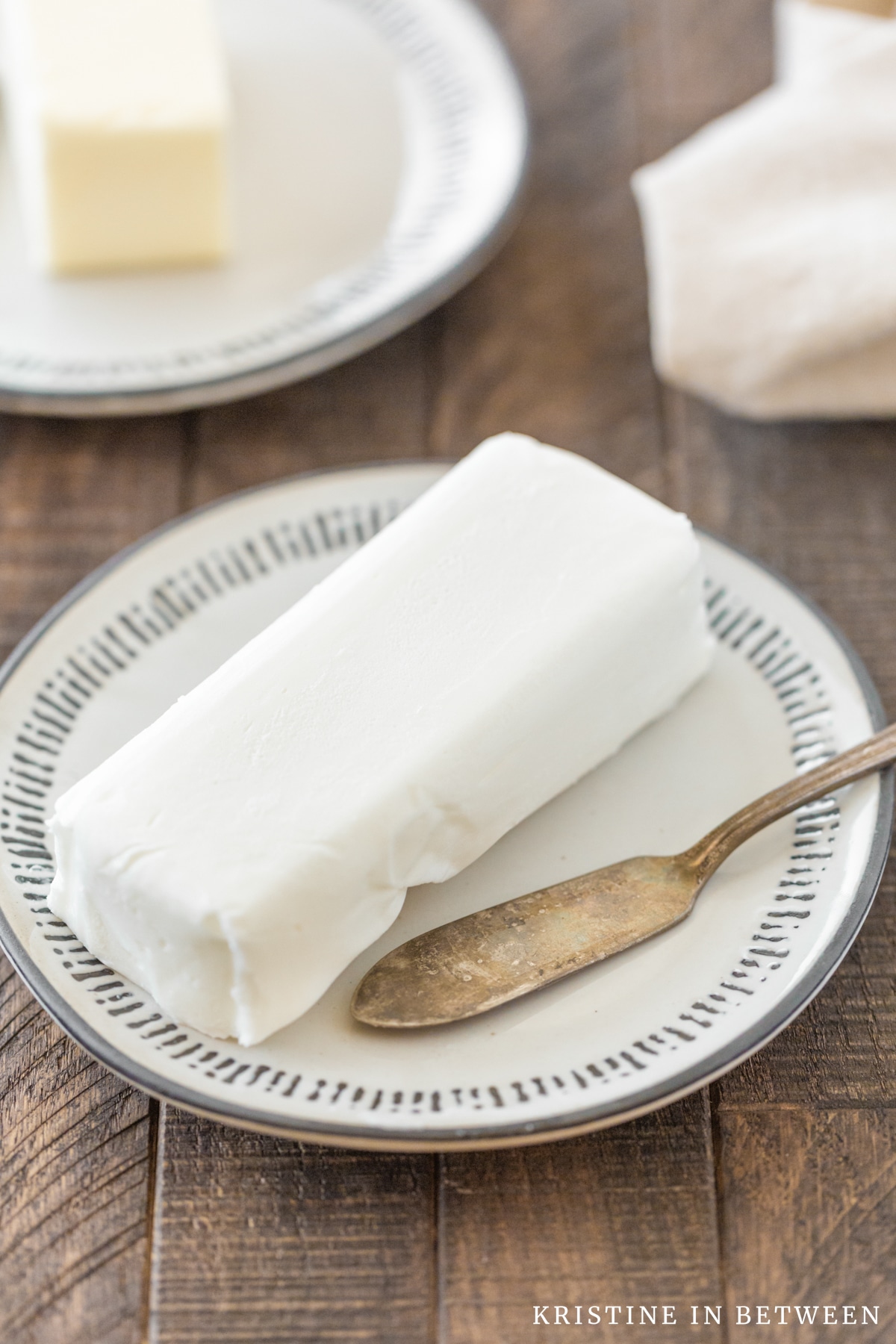
The Versatile Shortening:
Now, let’s talk about shortening. This hydrogenated vegetable fat is prized for its ability to create tender and flaky results in certain recipes. Here’s when shortening should be your choice:
- Texture Control: Shortening has a higher melting point than butter, making it fantastic for recipes where you want to maintain a precise texture. Think flaky pie crusts, biscuits, and certain types of bread.
- Longer Shelf Life: Shortening is less prone to spoilage than butter, which can be particularly useful if you’re making pastries that need to last a while or in warm environments.
- No Dairy Concerns: For those with dairy allergies or lactose intolerance, shortening is a dairy-free alternative that ensures everyone can enjoy your baked creations.
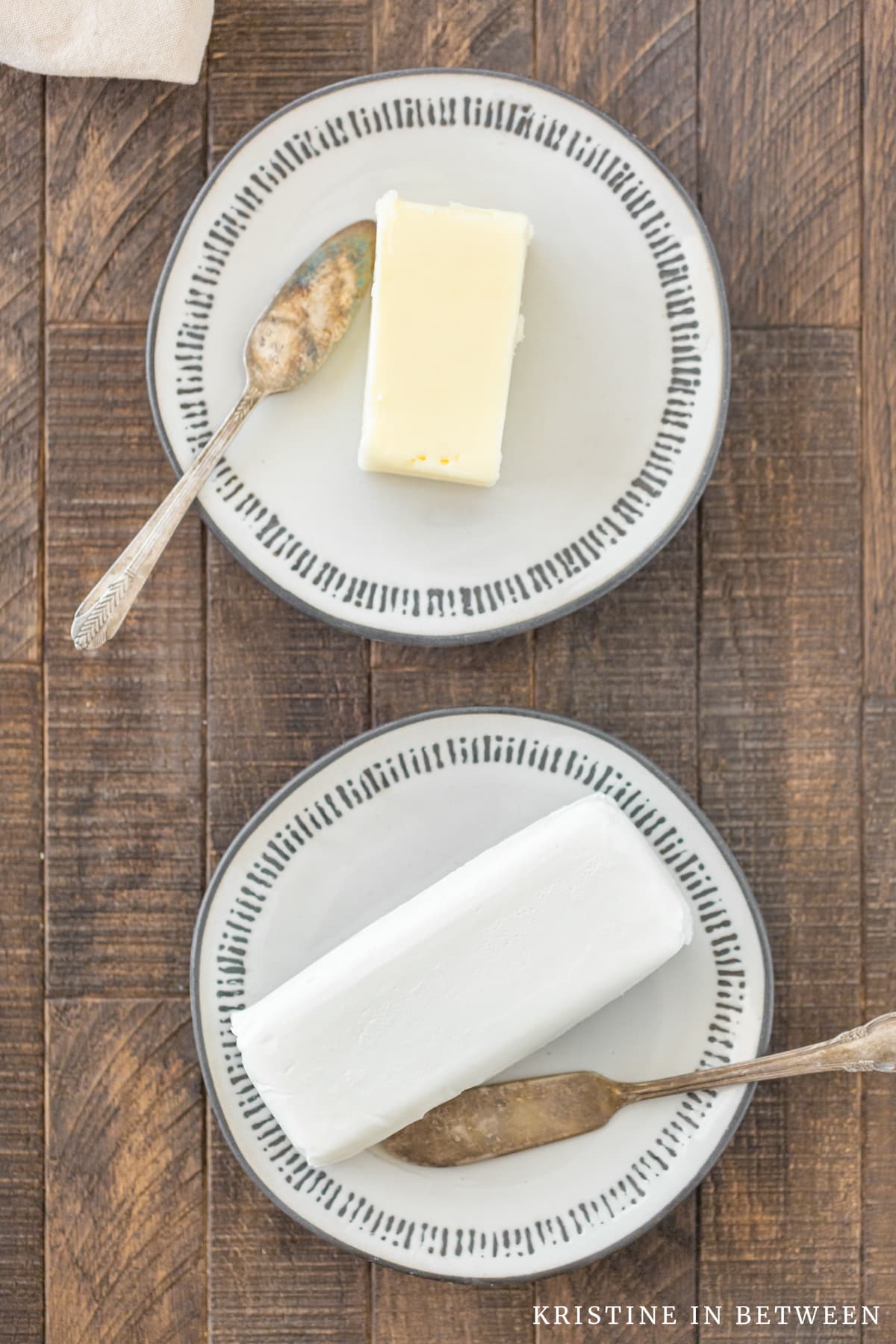
Combining Butter and Shortening:
But what if you can’t decide between the two? Sometimes, a blend of both butter and shortening can work wonders in your recipes:
- Balancing Act: Using a mix of butter and shortening allows you to enjoy the flavor of butter while reaping the textural benefits of shortening. For example, in chocolate chip cookies, combining the two can lead to cookies that are both tender and maintain their shape during baking.
- Customization: You can adjust the ratio of butter to shortening based on your preferences. Experiment to find the perfect balance for your recipe.
When you’re baking, think about what you want to achieve – the end result, if you will. If you want rich flavor and a soft texture, go for butter. If you’re aiming for a specific texture or need a dairy-free option, shortening might be the way to go.
And in some recipes, a combination of both can give you the best of both worlds, offering flavor and texture control. So, next time you’re in the kitchen, armed with your mixing bowl and measuring cups, consider the role of these fats in your recipe. Happy baking!

